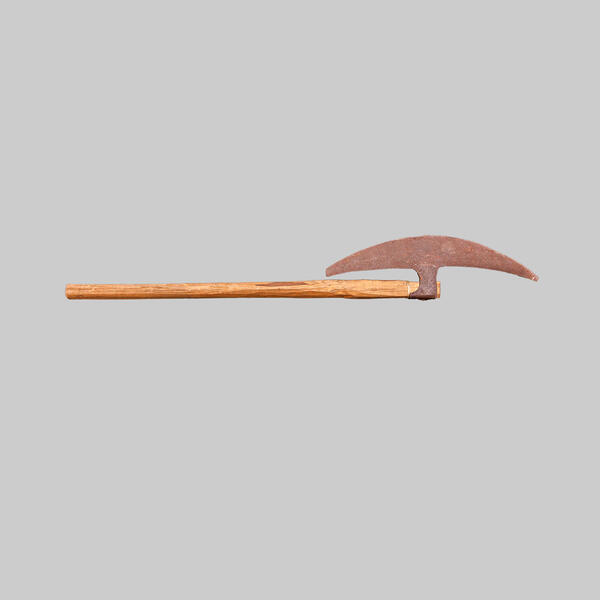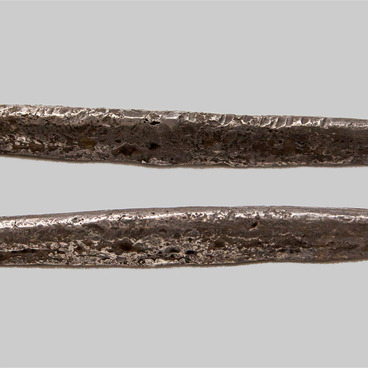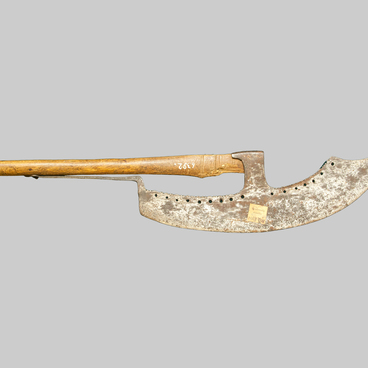In the 16th–17th centuries, an important element of the Russian soldiers’ weaponry was berdiche. This is a broad-bladed battle axe with an elongated month-like cloth, which was mounted on a wooden shaft (in some sources it is called a “spear staff”). The length of the shaft was about 2 sazhens, which is about one and a half meters, when converted to modern measures of length. In the lower part, the blade evolved into a metal plate-string, which was either tied to the shaft or nailed. Thus, the axe was double-fastened to the spear staff — by a “string” and a lug. The sample presented in the exhibition of the Tobolsk Museum Reserve does not have a string, obviously it was lost.
The main number of berdiches was produced in the European part of the Muscovy, from there they were already distributed on weapons of various types of troops — streltsy, soldiers, dragoons and militia members.
These weapons were imported to Siberia, historians do not know about the existence of any major center for the production of berdiches beyond the Urals – there is no accurate data on their manufacture in local forges. But there was a mass production in European Russia, while berdiches were produced by both city and village blacksmiths, and specially trained craftsmen at Tula and Kashir factories. For example, in the documents of the 17th century gunsmiths-professionals “blacksmiths of berdiches” were mentioned.
However, weapons were not delivered yet beyond the Urals systematically and regularly. Because of that, there was a situation of uneven distribution of berdiches across the Siberian garrisons. According to written sources, their number could reach several hundreds in some arsenals, and in others they were not even available. A berdiche was probably not the most convenient “camping” weapon, it could only be used effectively in personal combat with the enemy on foot, in the defense of cities and ostrogs. For that very reason berdiches were needed most in the taiga regions of Western and Central Siberia, as well as when defending the fortresses.
The main number of berdiches was produced in the European part of the Muscovy, from there they were already distributed on weapons of various types of troops — streltsy, soldiers, dragoons and militia members.
These weapons were imported to Siberia, historians do not know about the existence of any major center for the production of berdiches beyond the Urals – there is no accurate data on their manufacture in local forges. But there was a mass production in European Russia, while berdiches were produced by both city and village blacksmiths, and specially trained craftsmen at Tula and Kashir factories. For example, in the documents of the 17th century gunsmiths-professionals “blacksmiths of berdiches” were mentioned.
However, weapons were not delivered yet beyond the Urals systematically and regularly. Because of that, there was a situation of uneven distribution of berdiches across the Siberian garrisons. According to written sources, their number could reach several hundreds in some arsenals, and in others they were not even available. A berdiche was probably not the most convenient “camping” weapon, it could only be used effectively in personal combat with the enemy on foot, in the defense of cities and ostrogs. For that very reason berdiches were needed most in the taiga regions of Western and Central Siberia, as well as when defending the fortresses.



